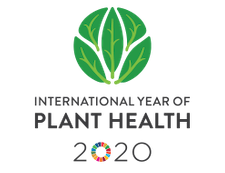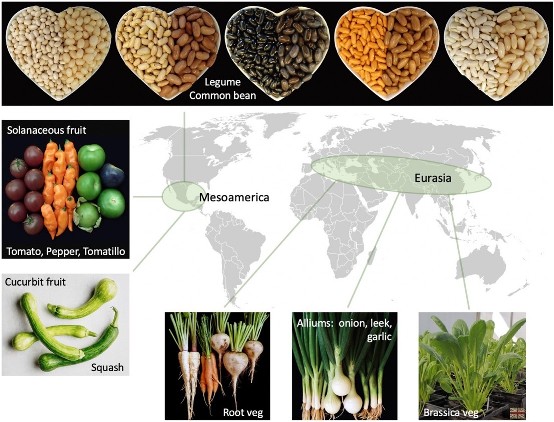Food Crops to Boost our Health from British Sunshine
| The Food and Agriculture Organisation (FAO) of the United Nations have declared 2020 as the International Year of Plant Health (IYPH) and have called for organisations to raise global awareness on how protecting plant health can help end hunger, reduce poverty, protect the environment, and boost economic development. Much of the research in the School of Life Sciences is aimed at improving crop productivity and combating pests and diseases while conserving the environment in order to feed an increasing population. In this series of articles we highlight just some of the work related to IYPH2020. |

|
We all need to eat well, especially now that living within our means is our new normal. Eating well determines our personal health and how much burden we collectively place on our healthcare system. It determines the impact we have on our environment, at home and across the globe. It connects us across living at all levels of personal health, home, community, country, continent and globe. Good news: if we follow evidence-based advice, we can eat our way to a healthier, more resilient and Greener Britain simply by shifting our diet to more legumes (to reduce demand for meat) and more vegetables and fruits (see EAT Lancet report).
What’s essential? Besides clean air and water, food must be at the top of our list. All of our food ultimately is plant-based. Take protein for example, we can get all nine essential amino acids from eating meat and dairy products, which have been derived from the plants in the animal’s diet. However, there’s a bonus with plant-based protein, which provides the same amino acids as well as essential dietary fibre, especially from combining pulses (like common beans and peas) and cereals (like wheat and oats) in our diet. We as consumers are the key link for action, in driving feedback in a more resilient and sustainable food system that starts at home.

What home-grown food we should include in our diet? All of the food ingredients shown below can thrive on British sunlight. Our best light for growing food is in April to September. In full sunlight, plants protect themselves against UV irradiation with chemicals called flavonoids. Flavonoids add a taste of sunshine and health benefits to our food, helping boost brain health and protect against cardiovascular diseases and cancer. So, UV irradiation can be healthy for both plants and for us.
Is our favourite pulse (the common or haricot bean) British? Not yet. Pulses are edible dry seeds of legumes. We currently import all of our white haricot beans (mostly from the Americas) to be pressure cooked in cans as British-style beans in tomato sauce (also from imported ingredients). Why? Because commercial varieties bred for North America take too long to grow in British sunshine. Common beans were first grown for food by the Aztecs and Incas in sunny Mexico and South America. Haricot beans store flavonoids in the seed coat, which provides a wide spectrum of colours (from white to black, and yellows, browns, reds, and greys in between). Healthy gut bacteria help us digest the essential dietary fibre contained within beans. Good news: British adapted bean varieties are being developed in a variety of colours at the University of Warwick for UK farmers to grow and for British consumers to eat. Quality seed supplies of the first white haricot variety are being increased by a commercial partner and could be launched for domestic food sales in 2022.
Our favourite vegetable fruits from Mexico taste delicious with haricot beans. Tomato and pepper are already top of the list, that also includes squash (a cucurbit relative of cucumber) and potentially tomatillos. Again, thanks to the Aztecs we can add additional flavor and nutrition to a British diet with these fruits, which provide a rich source of vitamin C and other antioxidants like flavonoids. In the UK, tomatoes and peppers are grown as protected crops under glass or polythene film. Although these materials look transparent, they act as a filter that removes UV from sunlight. However, an amazing polymer film called ETFE is being engineered to revolutionise greenhouse food production with full spectrum sunlight. This material allows UV light to pass through and stimulate plant growth. A prototype greenhouse called the Natural Light Growing Centre on the University of Warwick Innovation campus will enable development of healthier and more flavourful food crops, for production in a Greener Britain.
British sunshine and soil already sustain the best homegrown field vegetables, including alliums (onions, leeks and garlic), potatoes (another crop from the Americas) and other root veg (like carrots, parsnips, beetroot, swede and even celeriac), and leafy vegetables (like brassicas and lettuce). No trade deal needed. A culinary future of home-grown Brit-Mex food is already possible.
For more information and updates, check out www.2BHealthyGB.com.
To more articles as part of International Year of Plant Health 2020
